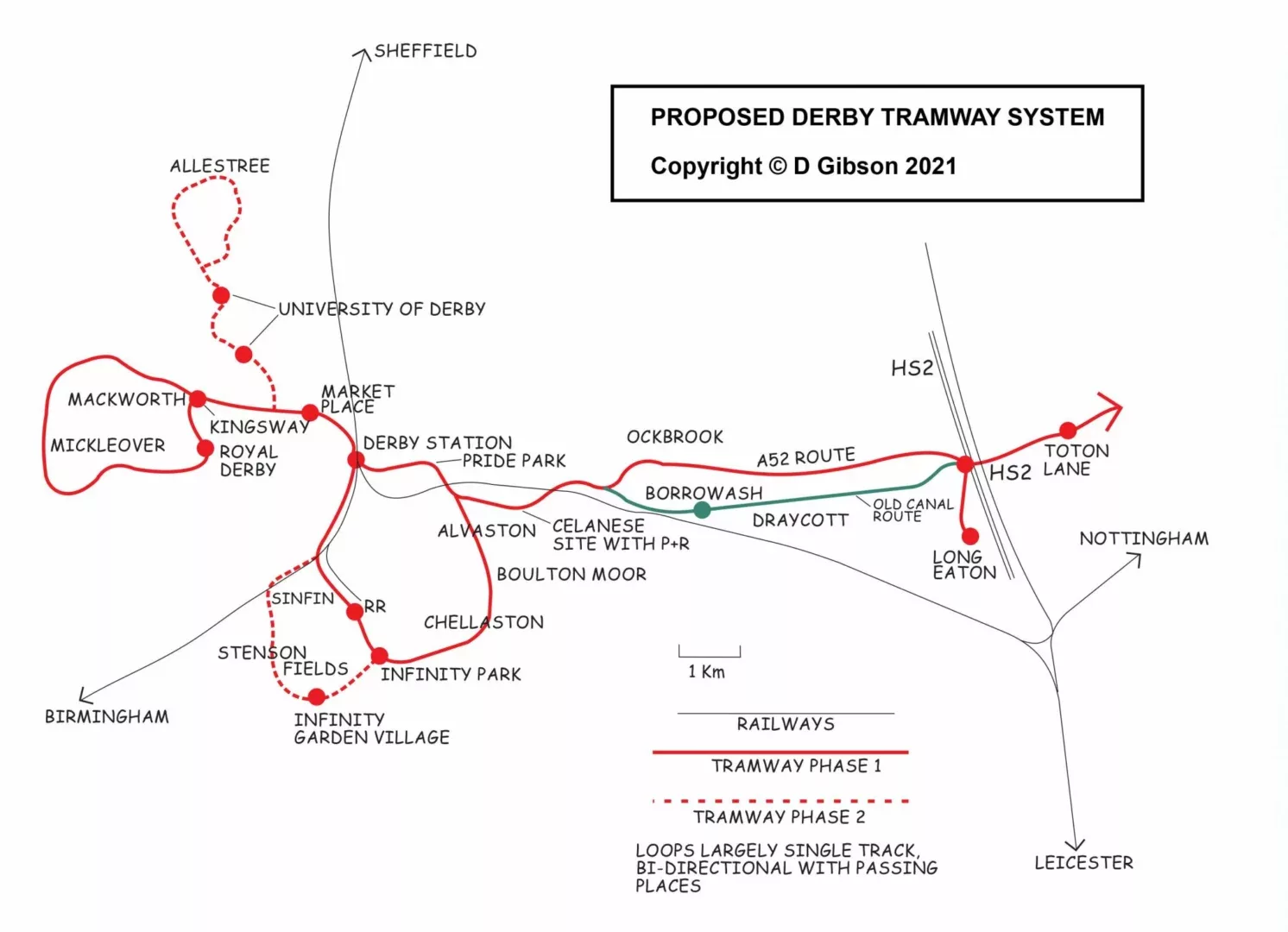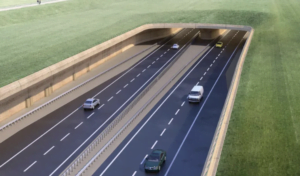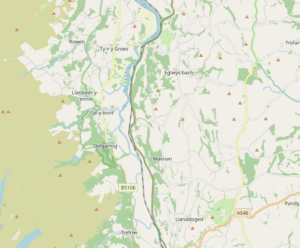The Light Rail Transit Association (LRTA) has called on the government to consider scrapping the A38 widening scheme in preference to a tram system similar to Nottingham’s tram network.
Following the High Court rejection of the planning permission for the A38 Derby Junction scheme, the LRTA said a ‘re-think’ of transport in the Derby area was needed. It said the road scheme was rejected on the lack of environmental and climate change damage being taken into account, and we need a transport system that is much more environmentally friendly, and inherently energy efficient.
This, said the LRTA, would be achieved by the creation of a tram system, just as has been very successfully achieved in Nottingham, where the NET system has removed around six million car journeys per year from the roads.
The association said that the old Great Northern railway alignment, which islargely intact, in that area of Derby, could enable a fast jo urney out of the city centre to Kingsway. Beyond Kingsway it would form a loop around Mackworth, Mickleover and the Royal Derby hospital and a Park and Ride site. At Friar Gate, the line would run on-street through the city centre, and then onwards via Midland Station to Pride Park. Here it would connect with an extension of NET to Nottingham and the Toton HS2 hub, suggested the LRTA.
“This line should attain around 24,000 trips per day, doing a great deal to relieve traffic problems and pollution, and greatly improve mobility in the city. This should be attainable for the likely cost of the road scheme, which has been quoted at £220 million but by the recent example of the Wyvern, is likely to be much more,” said the LRTA.
David Gibson, LRTA Regional Officer for the East Midlands, said “This would provide high quality fast and reliable public transport to Derby, and make serious inroads to traffic and pollution problems, and increase the economy of the city and quality of life. Trams are inherently low energy by virtue of the low rolling resistance of steel wheel on steel rail, and don’t cause the non-exhaust emissions of rubber-tyred vehicles, which will still be present even if battery-powered.”



























